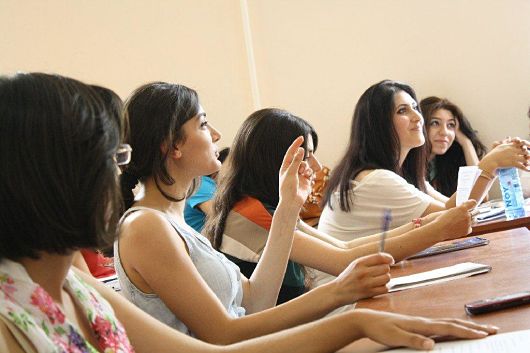5 Facts About Education in Armenia

In Armenia, schools are essential for cultural survival and are highly valued with 1,600 years of literary history. The government spends about 3 percent of its annual GDP on education and has passed new laws to help increase educational standards. Armenia has found some success improving education standards and is continuing to find solutions to other educational issues.
Here are five facts you may not know about education in Armenia:
- 77 percent of teachers in primary schools are professionally trained. The government is attempting to increase the number of experienced school teachers by raising their monthly wages, which are below the national average. In 2005, their wages went up 65 percent, but many teachers today are still offering private tutoring in order to supplement their teaching income.
- Armenia ranks 59th in the world in primary school enrollment. Part of the problem with enrollment for education in Armenia is the fact that there are 18,000 children who are not enrolled in primary school. Most of the un-enrolled children are boys and they end up working to help their families, sometimes earning more than Armenian teachers.
- Dropout rates in Armenia are rising by 250 percent per year. Armenia’s dropout rates are low compared to neighboring countries, but the fast rise is alarming. However, the government is committed to improving education by ensuring access to a quality education for all Armenians regardless of gender, race, ethnicity and income level.
- 47 percent of Armenians have access to the internet, compared to only 6.4 percent in 2009. The country now ranks 61st in the world for internet access, which is crucial to the continued growth of education in Armenia.
- Disabled school children have limited access to education: There are about 8,500 disabled children in Armenia, and only a few of them are able to attend school. UNICEF has helped increase educational programs for children with special needs by enrolling 250 students in 18 inclusive kindergartens and 257 in 14 inclusive schools.
In 2014, the World Bank announced that they will provide $30 million for the Education Improvement Project in Armenia. Reforms taking place include implementing new educational standards and a new national curriculum and extending the educational system to include grade 12; these steps are vital to building a successful and competitive educational system in Armenia. The project will also help 12,000 children living in poverty in rural areas and boost development for electronic content.
– Donald Gering
Sources: Internet World Stats, Social Progress Imperative, UNESCO, UNICEF, World Bank
Photo: Open Source Foundation
